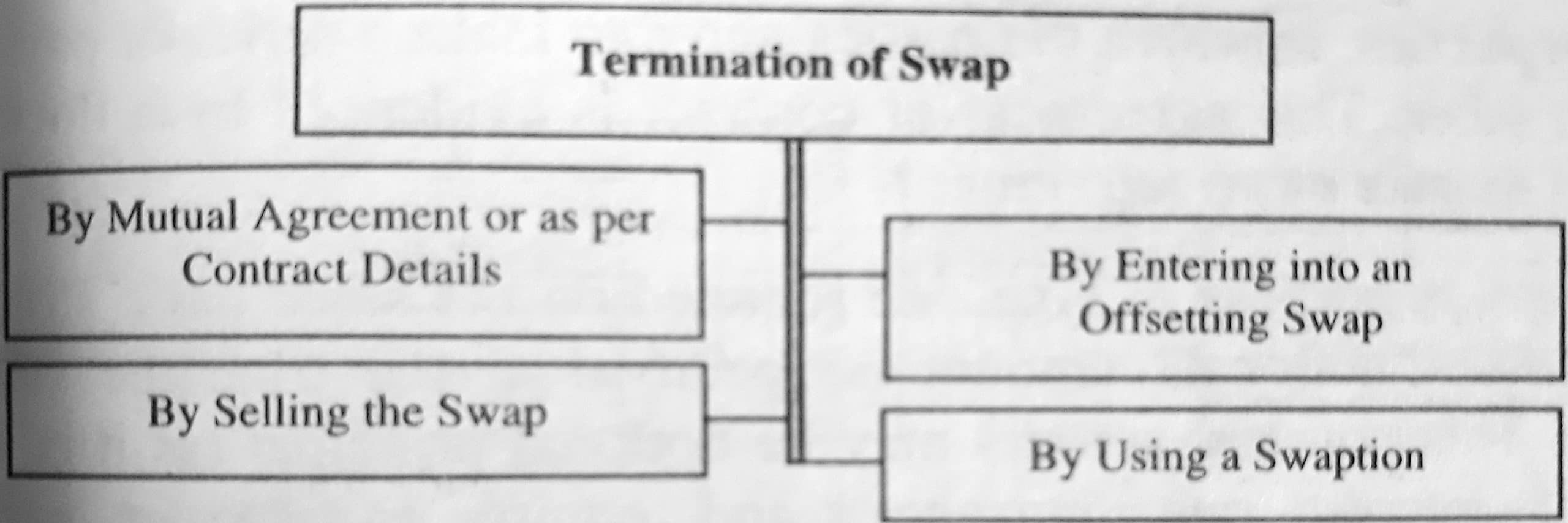The different ways in which a swap can be terminated are as follows:
By Mutual Agreement or as per Contract Details
When a swap contract is initiated, it has zero value.
However, as time passes and circumstances change, the swap will be more valuable to one party than the other party.
Ibis value is called the market value. If both parties mutually decide to go for swap termination, they can do so by the exchange of this market value.
For example, if one party holding the swap has a positive market value of Rs.1,00,000, then the swap can be settled if the other party pays Rs. 1,00,000 to the party with a positive value.
To be able to settle a swap in this way, either party should agree, or there should be a provision for this in the swap agreement.
By Entering Into an Offsetting Swap
A swap can also be terminated indirectly by entering into a similar swap agreement that offsets the original contract.
For example, let’s say we have a swap contract where we pay fixed (5%) and receive floating (LIBOR).
Now we can terminate this contract by entering into a new swap agreement with the same or different counterparty where we pay floating (LIBOR) and receive fixed.
The fixed rate in the new contract will be decided based on the current market conditions, but the floating rates will be offset. However, this method will not eliminate the default risk.
By Selling the Swap
A swap can also be terminated by selling it to another counterparty.
If one party wants to exit the swap contract, and the swap is worth Rs.1,00,000, it can take consent from its counterparty and place another counterparty in its own place to make the swap payments.
In effect, the swap is sold for Rs. 1,00,000.
By Using a Swaption
The swap can also be terminated by using swaption.
A swaption is an option granting its owner the right but not the obligation to enter into an underlying swap. A party can use a swaption to enter into an offsetting swap.
